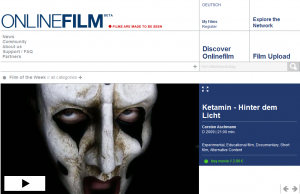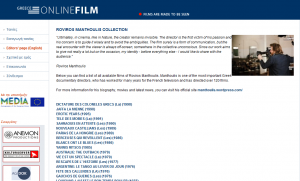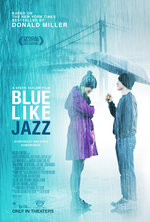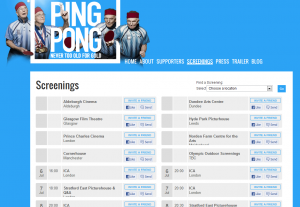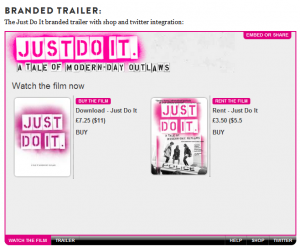
European distribution series: OnlineFilm
By Sheri Candler
Here is the second part in a series on European distribution tools. I met OnlineFilm AG CEO Cay Wesnigk, based in Germany, while attending the FERA General Assembly in Copenhagen. Like most people in attendance, he is trying to understand the repercussions and opportunities of the online space to the film industry. His response was to come up with a solution that allows filmmakers themselves to profit and to spread their work to territories outside of their home country by using the internet.
SC: What does OnlineFilm hope to accomplish for European filmmakers and film audiences?
CW: The Onlinefilm.org System is a multilingual marketplace for films and an application service provider for digital distribution and marketing services, owned by a collective of independent producers/ filmmakers. Any rights owner from all over the world can use its technology to offer films as download to own and stream to rent or both.
To reach these goals, we want to strengthen and enlarge our network of national partners that are running the Onlinefilm.org system in their territories and run national websites that use the same technology to develop local markets. Together with our partners we want to develop new tailored ways of marketing by using social media and viral campaigning in their languages and territories and then learn from each other and teach our best practice examples to the film makers to empower them to use the onlinefilm.org system in the best possible way to market their films.
Our motto is “Films are made to be seen” and we want to make it possible for the international audience to access the films they are interested in and find those they did not know existed, helping the makers to find and access their audience.
SC: Do you think the audience is ready to start watching full length films online or on mobile devices?
It should be added to the question, “legally aquired” films. I think it is a proven fact that our audience is watching films on those devices, just go through a train in Europe and you will notice how many people are watching films on laptops and tablets, some even on smart phones. In catalogues of supermarkets, hard disks are offered that have a connection to regular TV and a remote control as well as Network access that make it easy to bring downloaded films to the TV screens. For us, the question is not if there is an audience out there for our films, the question is, is there an audience willing to pay for them?
But there is another angle to your question, a topic for online watching of films is the deceleration of the audience. It is difficult to watch 90 minutes linear programming with no interaction expected on a computer or tablet when the IM Messenger pops up, the Skype rings and your email program reminds you that a new mail has arrived in your mailbox… For that we need to find ways to decelerate our audience. One is the easy connection of the device with the TV set as mentioned above. Leaning back in front of the TV with the mouse out of reach is half of the trick. The other half still has to be developed.
SC: There are already many online streaming platforms for films, many of them are free streaming and ad supported streaming. What is the plan for driving audience interest to OnlineFilm?
CW: A film is a little bit of celluloid and a lot of marketing…
We have experienced that many film-makers do not promote their films once they have upload them in to the system by using the tools and strategies actively that we supplied for them. Some of them do not even link to the films from their own homepages, let alone think about how to promote their films through other channels that would generate audiences for them. Even a good Google ranking for film titles searches that we can supply does not bring the revenue, since for that, the customer has to know that a film exists and must actively search for it. So we have drawn the conclusion that we must act more on the filmmakers behalf to create more sales and such make the option to offer films through the Onlinefilm.org system more attractive. One measure we took was the cooperation with other outlets and websites by offering them tailored Mediatheks for their visitors, creating more outlets and chances that audiences will find a film by chance.
The next step will be to create best practice examples through social media campaigns that will lead to more sales of the promoted example films.
We offer tools to the filmmakers to help them create their own audiences. We offer at the same time a Platform for curators, for the hunters and collectors. They can use the search tools the site offers them to find the raw diamonds. They can browse through the categories, use our full text search in German and English or search for directors or film titles they might already be aware of.
The film of the week section on the landing page of www.onlinefilm.org can change its focus on three different film categorie; Docs, Short- or Feature films, or offer a mixture of all of them (default). With this preselection we want to promote films to people who just drop by our platform with no special film or interest in mind. We often change the selection and try to keep the offer interesting and diverse so every visitor should find something of interest to him and, if not, might be motivated to dig deeper into the catalogue, to find out more about its wealth of topics and genres.
In the second line “the featured films”, the recommendations also changes accordingly once a customer selects where his point of interest lies (docs, short, feature). If someone tells us he is interested in shorts, the site will offer him different shorts. If he tells us he likes docs, he will be offered mainly docs. This is how we try to keep our first time visitors on the site and offer them selected films out of our large catalogue that might be of interest for them. The more we get to know from a visitor on the site, the more we want to tailor the offers made to his interests.
Our national portal Strategy – many different editorial lines
If a visitor decides to “explore the Network” he will be guided to the overview map with all national sites that are active so far. He can then select one of them, where our national Partners have the editorial control, offer national content or content they consider interesting for their fellow country man. Their editorial line is subjective. They will offer the films from their country and others they have found in the system and deem interesting for their audience. We plan to extend the editorial possibilities of the partner pages so the partners will also have their own film of the week and other editorial possibilities to promote certain films on their sites.
By creating sub portals with a special focus, it is also always possible to follow a new editorial line if enough films to justify that are in the system..
Our Greek partners www.greece.onlinefilm.org are the most advanced, they have been with us right from the very beginning of the project in 2007 and they also have made the most out of the technology that onlinefilm.org has offered them so far. As an example, on their editors page, they made their own sub categorisation and such made it possible to browse through the films via topics they have selected on their own.
They also have published the Roviros Manthoulis collection and make it possible to browse through the films of this renowned Greek filmmaker. Both serve as an example for an individual editorial line of a partner portal.
Another example is Ireland.onlinefilm.org. Our Irish partner has chosen quite a ew titles from the system and publishes them on his site. Among them a French/Greek film called IRLANDE: LA MEMOIRE D’ UN PEUPLE about Ireland and its music in the 70s. This film has become quite popular on the Irish website and no one in Ireland would ever have known about this document of Irish folk music if it would not have been uploaded by our Greek partner and found and published by our Irish partner. Also interesting to note is that our Irish partner translated the site into Gaelic language, another way to make the site something special. We use a multi language editor that makes it possible to translate any of our sites in as many languages as necessary.
Since it is always also possible for any rights owner to upload any film from anywhere, we have many films from countries where we do not have a partner installed yet. The more films we get from one country the more active our search for a partner there becomes. We always offer anyone who uploads at least 30 films to get his own Macro shop. This would entitle him also to get a promoter percentage of 8% for any customer that enters the System through his shop. If the relationship develops well and we see the person is active and well connected, he can apply to become a national partner and will then be able to also add other films he has not uploaded into his shop. If he is willing to invest into the cooperation, he can apply for full partner status that would also guarantee him part of the revenues any film uploaded from his territory might generate as a partner percentage. An example of a tailored Macro shop of a German distributor is here: www.filmgalerie451.onlinefilm.org
This is how we slowly built our Network of national partners and built more and more local outlets with their own editorial line.
Some more examples you will find here
www.kurzfilmtage.de/videothek the Videothek of the Oberhausen Shortfilmfestibval, run with onlinefilm technology and with Onlinefilm films
www.freitag.onlinefilm.org A videothel of a German Newspapers Website, run on onlinefilm technolog and with Onlinefilm films
SC: Is this platform mainly for German films or is the focus on all foreign language films?
CW: Any one can upload a film no matter where he or she comes from. We encourage people to upload the film in its original language version and in English. Subtitles are sufficient. More language versions can be uploaded and offered for different self chosen conditions. We even offer a tool ( in Beta) with which one can create subtitles to a film which is uploaded into our system and save and offer them. Subtitles can also be imported into the tool and exported into many formats if produced with the tool. The subtitle tool is designed in a way that a filmmaker could ask a professional or friend in another country to create the subtitles of a film he has uploaded. We are also planning to create a system to allow a person who has created subtitles to opt in and get a piece of the revenue as remuneration for his work, any time the film is watched with his subtitles.
SC: What prices are being asked of the audience to pay?
CW: The price per download or stream is defined by the rights owner who offers the film via the onlinefilm.org system. Over the last 2 year,s the average download price per title has increased from € 2,50 (2008) to € 5,00 in 2010 and to € 6,00 in June 2011 (from a range between € 0.99 and € 16,00). Our bestseller right now costs € 8,50 per download (around $10 USD).
SC: How do you handle payments on the system for all different currencies? Can those not on the Euro still use the OnlineFilm system? How about those who don’t have credit cards?
CW: Right now you pay via Paypal in Euro, that works also with a credi card via Paypal guest status, then you can stream or download the film direct when redirected by Paypal after the payment is done on their server. We are looking into possibilities to offer films in different currencies viaPpaypal right now and hope to offer that kind of service in the near future!
As an alternative, we already offer payment through international bank transfer via IBAN and BIC to our account in Germany. Once the money is sent to our onlinefilm account, the buyer sends us a pdf with the view of the online money order ( screen shot or what the online banking software offers) and we sent him or her the download links via e mail or put the film for streaming into his or her account at onlinfilms under “my films” This sometimes takes a few hours to fulfill but it is better than nothing. So far it has been used mainly by Paypal haters.
SC: What is the revenue split for filmmakers? Are there any fees that have to be paid for the films to use OnlineFilm?
CW: No fees are asked just to offer the film on onlinefilm.org. If you just use the system to host trailers/teasers and use our promotion tool to send free downloads and streams to selected people, but you do not offer the film for payment to a general audience, we would ask you to pay for used bandwith and storage. But there is a free amount of traffic per month, sufficient for trailer hosting of average films, that anyone can use before that happens.
The revenue is split as follows. 51% of the turnover always goes to the producer/ rightsowner. If the rightsowner buys 1.000 shares of the Onlinefilm AG and such becomes co-owner of the system ( option) he can get 5% more which then ads up to 56% . If he sells the film via an embedded shop or Macro shop from his own page and opts in for the affiliate percentage, he will get an extra 8% which then makes his or her revenue climb up to 64% of the sales price (the Affiiliate system still has to be implemented).
SC: What kinds of films are doing well at the moment? documentary, horror, drama? What might these successes all have in common? Do they have notable names, festival accolades, strong coproduction deals that have given lots of promotion, great mainstream media reviews?
CW: We mainly have quite old films on the platform so far, this has many reasons in copyright issues unclear, release windows and power play of the old gatekeepers trying to hinder the films going online all together. Only very few of the films could profit directly from any marketing campaigns.
The films that are successful right now have a campaign behind them or at least some promotion mostly done by the filmmaker via personal website or mailing list. The others are just occasional sales by active seekers for exactly that title. They live on their past time fame.
One very successful 15 year old film Deckname Dennis is a first part of a film called Die Mondverschwörung presenting the same character and using the same technique, that has been released theatrically recently. Through the press the new film received and by creating a social media campaign for the new film that clearly stated its predecessor was available online (Facebook, Youtube, a website, Twitter) we made that film popular again. You might say it went viral and made quite an impressive turnover for its rightsowner. To download the film, the price is 8,50 Euro. We were extremely happy that through a good text the director posted in the blog of a pirate site where the film was also available, we got them to link to our legal offer and take down the illegal offer. Through our link statistics, we can see that many people come from there to us.
SC: I know that the German film industry is particularly concerned about online piracy, how does a site like OnlineFilm help alleviate this concern?
CW: We do not use DRM systems simply because we do not believe in them and we do not want to make it difficult for the customers. Also we do not want to greet our customers as criminals that we do not trust. We follow the principle of “digital rights fair trade” in short “do not bullshit your audience and your audience won’t bullshit you”. Our download is DRM free, whoever buys it will also be able to download the film again, when he needs to. He just needs to log in with his username and it will be in the “my films” section. Since our streaming technology is “dedicated flash streaming” it is not quite as easy to save the stream as with other techniques. The stream is rented for 48 hours and usually cheaper than the download, but it can also be offered solely if people want to better protect their work and do not want it downloaded.
SC: Is there a geoblocking mechanism on OnlineFilm so that if a filmmaker has sold a online sales territory or has a sales agent looking to sell a territory, that territory is blocked? I know that many sales agents ask for a hold back timeframe on titles so they can sell those territories around the world. Is the site mainly to exploit titles that are no longer active in the marketplace? In effect, taking films out of the “library” mode and putting them back out into the marketplace?
CW: At the moment we do not offer geoblocking. Anyone half clever seems to be able to enter any system with a false IP and ridicule these mechanisms. Secondly, we think if a customer wants to legally purchase a film we should sell it to him and not tell him to go elsewhere (namely the pirate sites). We will nevertheless implement an IP scan and geolocation tools in the near future. We have to since the industry seems not to change its ways as fast as it should. We hope to be able to serve the customer by offering a revenue share with the person or distributor who has the rights in the territory where the customer comes from. But this might still take while to program and implement.
SC: Does OnlineFilm do any marketing on the part of the titles? Or is the filmmaker expected to conduct their own marketing strategy to drive traffic to the site?
CW: Onlinefilm does marketing for the site and through the many partner sites also tries to drive more traffic towards the films. We also market some titles that we select via our onlinefilm Facebook page and via the film of the week and the recommendations on the landing page. We have a space on the Kulturserver Network where we can promote individual titles.
When our staff has time left, we also try to encourage links to topic driven films from topic driven websites. We offer marketing support for filmmakers that are open for it, but we ask for a fee if they want a campaign run by us. Then we try to build a social web campaign with them and show them how to, or do the job for them depending on their skills and time or money they want to invest.
This is something we definitely need to put more energy in because far too many filmmakers here do not know how to self promote their films and rather invest their time in making a new one. The revenue made online with many of the films is so far not big enough to encourage distributors or filmmakers to invest a lot of time or money in extra marketing. But since we see that the turnover with films is growing constantly, we hope that this will change and lead to an exponential growth of sales once people will be willing to invest more in marketing once they see the potential.
We are preparing a social media campaigning and online marketing handbook. At the same time we are trying to connect with people who specialize in the craft of online film marketing. We want to develop business models with them that will work for them and the rights owners possibly also on a revenue share basis.
My thanks to Cay Wesnigk for taking the time to talk with us and explain how his company is helping European filmmakers make the shift from a primarily cinema driven distribution model to an online one.
Orly Ravid July 25th, 2012
Posted In: Digital Distribution, Distribution, Distribution Platforms, Facebook, Marketing
Tags: Cay Wesnigk, Copenhagen, download, DRM, European Digital Distribution, featured films, FERA, geoblocking, Germany, Greece, Ireland, online film distribution, OnlineFilm, Paypal, Roviros Manthoulis, streaming
SXSW Wrap up
By Bryan Glick
Just because you didn’t premiere at Sundance or Cannes doesn’t mean you’re out of luck. Though not living up to the sales quota of last year, there are two dozen premiere films from SXSW that have sold in the U.S. Here’s a wrap up of the film sales from SXSW.
Anchor Bay stuck with their niche and took North American rights to two midnight entries Girls Against Boys and The Aggression Scale, while Cinedigm (who recently acquired New Video) went for U.S. Rights to In Our Nature and the midnight audience award winner Citadel. Pre-fest buys include Crazy Eyes which went to Strand Releasing for the U.S. and Blue Like Jazz courtesy of Roadside Attractions. Blue Like Jazz was promptly released and has since grossed close to $600,000 theatrically in North America. Lionsgate is handling DVD, VOD, and TV through their output deal. Meanwhile Crazy Eyes just started its theatrical run on two screens pulling in a little under $5,000 in its first week.
Millennium Entertainment took the gross out comedy The Babymakers and yet another midnight film, The Tall Man was bought for the U.S. by Imagine. If you’re a midnight film at SXSW, odds are things are looking up for you. The same could be said for The Narrative Spotlight section where two thirds of the films have since been acquired including The Do-Deca Pentathlon taken by Red Flag Releasing and Fox Searchlight. Red Flag is handling the theatrical (The film grossed $10,000 in its opening weekend off of 8 screens) while Fox Searchlight will cover the other ancillary markets. The Narrative Spotlight Audience Award Winner, Fat Kid Rules the World was bought by Arc Entertainment for North America and Frankie Go Boom was the first film to reap the benefits of a partnership with Variance and Gravitas. It will be released in the U.S. on VOD Platforms in September via Gravitas followed by a theatrical in October courtesy of Variance.
And though they did not premiere at SXSW, both Dreams of a Life and Electrick Children had their U.S. premieres at the festival and have since been bought. U.S. rights to the documentary Dreams of a Life were acquired by Strand Releasing. Meanwhile, Electrick Children was snatched up for North America by Phase 4. Phase 4 also nabbed North American rights to See Girl Run.
Sony Pictures and Scott Rudin took remake rights to the crowd pleasing Brooklyn Castle while HBO acquired domestic TV rights to the doc The Central Park Effect. Meanwhile, after showing their festival prowess with their success of last year’s breakout Weekend (which was sold by The Film Collaborative’s Co President, Orly Ravid), Sundance Selects proved they were not to be outdone and got the jury prize award winner Gimme The Loot for North and Latin America. Fellow Narrative competition entry Gayby sold its U.S. rights to Wolfe Releasing, a low 6-figure deal. That deal was also negotiated by TFC’s Orly Ravid. And not to be outdone, competition entry, Starlet rounds out the Narrative Competition films to sell. It was acquired for North America by Music Box Films.
S2BN Films’ Big Easy Express became the first feature film to launch globally on iTunes. It will be released in a DVD/Blu-Ray Combo pack on July 24th by Alliance Entertainment followed by a more traditional VOD/Theatrical rollout later this year.
Other key deals include Oscilloscope Laboratories acquiring North American Rights to Tchoupitoulas, Snag Films going for the US Rights of Decoding Deepak, Image Entertainment’s One Vision Entertainment Label aiming for a touchdown with the North American rights to The Last Fall and Factory 25 partnering with Oscilloscope Labs for worldwide rights to Pavilion.
Final Thoughts: Thus far less than one third of the films to premiere at SXSW have been acquired for some form of domestic distribution. While that may seem bleak, it is a far better track record than from most festivals. In The U.S., SXSW is really second to only Sundance in getting your film out to the general public. The festival also takes a lot of music themed films and more experimental projects with each theme getting its own designated programming section at the festival. Those films were naturally far less likely to sell. The power players this year were certainly Anchor Bay and Cinedigm each taking multiple films that garnered press and/or have significant star power. Other companies with a strong presence and also securing multiple deals were Strand Releasing and Oscilloscope. Notably absent though is Mark Cuban’s own Magnolia Pictures and IFC (Though their sister division Sundance Selects made a prime acquisition). Magnolia did screen Marley at the festival, but the title was acquired out of Berlin, and IFC bought Sleepwalk With Me at its Sundance premiere.
While it is great that these films will be released, it also worth mentioning what is clearly missing from this post. There is almost no mention of how much these films were acquired for. The fact is films at SXSW don’t sell for what films at Sundance do and it is safe to assume that the majority of these deals were less than six figures with almost nothing or nothing at all getting a seven figure deal.
As for the sales agents, Ben Weiss of Paradigm and Josh Braun of Submarine were working overtime, with each negotiating multiple deals.
SUNDANCE UPDATE: Since the last Sundance post, there have been two more films acquired for distribution. Both films premiered in the World Documentary Competition. The Ambassador negotiated successfully with Drafthouse Films who acquired U.S. rights for the film which will premiere on VOD August 4th followed by a small theatrical starting August 29th. Also finding a home was A Law in These Parts which won the jury prize at this year’s festival. Cinema Guild will be releasing the film in theaters in the U.S. starting on November 14th. 75% of the films in the World Documentary Competition now have some form of distribution in the US.
A full list of SXSW Sales deals from SXSW is listed below. Box office grosses and release dates are current as of July 12th.
| Film | COMPANY | TERRITORIES | SALES COMPANY | Box Office/ |
| Release | ||||
| See Girl Run | Phase 4 | North America | Katharyn Howe and Visit Films | |
| Starlet | Music Box Films | North America | Submarine | |
| The Babymakers | Millenium | US | John Sloss and Kavanaugh-Jones | Theatrical Aug 3rd |
| DVD Sept 10th | ||||
| Citadel | Cinedigm | US | XYZ Films and | |
| UTA Independent Film Group. | ||||
| The Aggression Scale | Anchor Bay | North America Blu-ray/dvd | Epic Pictures Group | |
| Girls Against Boys | Anchor Bay | North America | Paradigm | |
| Tchoupitoulas | Oscilloscope | North America | George Rush | |
| Gimme The Loot | Sundance Selects | North and Latin America | Submarine Entertainment | |
| The Tall Man | Image Entertainment | US | CAA and Loeb & Loeb | August 31st |
| Elektrick Children | Phase 4 | North America | Katharyn Howe and Paradigm | |
| Blue Like Jazz | Roadside | US | The Panda Fund | $595,018 |
| Crazy Eyes | Strand | US | Irwin Rappaport | $4,305 |
| In Our Nature | Cinedigm | US Rights | Preferred Content | |
| Brooklyn Castle | Sony Pictures | Remake Rights | Cinetic Media | |
| Scott Rudin | ||||
| The Central Park Effect | HBO | US TV | Submarine Entertainment | |
| Gayby | Wolfe | US | The Film Collaborative | |
| The Do Decca Pentathlon | Fox Searchlight | North America | Submarine Entertainment | $10,000 |
| Red Flag Releasing | ||||
| Fat Kids Rules The World | Arc Entertainment | North America | Paradigm | |
| Decoding Deepak | Snag Films | US | N/A | October |
| Big Easy Express | Alliance Entertainmnet | Worldwide DVD/VOD | Paradigm and S2BN | July 24th DVD/Blu-Ray |
| Big Easy Express | S2bn | Worldwide Itunes | Paradigm and S2BN | Available Now |
| The Last Fall | Image Entertainment | North America | N/A | |
| Pavillion | Factory 25 | Worldwide | N/A | Jan |
| Oscilloscope Labs | ||||
| Frankie Go Boom | Gravitas | US Rights | Reder & Feig and Elsa Ramo | VOD Sept |
| Variance | Theatrical Oct | |||
| Dreams of a Life | Strand releasing | US Rights | eone films international | Aug 3rd |
Orly Ravid July 18th, 2012
Posted In: Distribution, Film Festivals, Theatrical
Tags: A Law in These Parts, Alliance Entertainment, Anchor Bay, Arc Entertainment, Ben Weiss, Big Easy Express, Blue Like Jazz, Brooklyn Castle, Bryan Glick, Cannes, Cinedigm, Cinema Guild, Citadel, Crazy Eyes, Decoding Deepak, Drafthouse Films, Dreams of a Life, Electrick Children, Factory 25, Fat Kid Rules the World, Fox Searchlight, Frankie Go Boom, Gayby, Gimme The Loot, Girls Against Boys, Gravitas, HBO, Image Entertainment, Imagine, In Our Nature, Josh Braun, Lionsgate, Millenium Entertainment, Music Box Films, Orly Ravid, Oscilloscope, Phase 4, Red Flag Releasing, S2BN Films, Scott Rudin, Snag Films, Sony Pictures, Starlet, Strand Releasing, Submarine, Sundance, SXSW, Tchoupitoulas, The Aggression Scale, The Ambassador, The Babymakers, The Central Park Effect, The Do Deca Pentathlon, The Film Collaborative, The Last Fall, The Tall Man, Variance, VOD, Wolfe Releasing
Introducing TFC’s new fiscal sponsorship program
The Film Collaborative recently started a fiscal sponsorship program to help filmmakers get access to funds they would not be able to obtain without 501c(3) status. The program is now fully up and running, headed by Lynnette Gryseels, former Fiscal Sponsorship Director at Film Arts Foundation in San Francisco. We have been getting lots of questions from interested filmmakers so here are the answers to many of them. There is also a lot of information available on our website.
What is fiscal sponsorship and how does it benefit artists?
Fiscal Sponsorship is used primarily when a non-profit film/video project or event wants to secure funding from private, foundation, government or corporate sources that give only to nonprofit organizations with IRS tax-exempt status. To be considered exempt, an organization must hold a current 501(c)(3) certificate from the IRS.
What are the benefits to the filmmaker that they couldn’t do on their own?
Many funding opportunities are not available without tax exempt 501(c)(3) status
What does TFC look for in projects to grant fiscal representation?
Projects must be consistent with the Film Collaborative’s charitable purposes. This means that any project you are proposing must be noncommercial and represent an imaginative contribution to the film or video art form. Project can NOT be a “work for hire.” Once that criteria is met, we look for projects that are well thought out and have a good chance of getting funding and being completed. Prior filmmaking experience is helpful or if you are new, it helps to have a production team of experienced people; an advisory board with experience mentors is helpful as well and will help make up for a lack of experience with new filmmakers. A polished proposal is essential. Send us your best effort following the directions and if your project looks promising, we will help guide you to develop your proposal further.
If I apply, am I guaranteed to get accepted?
No. The Film Collaborative is not obliged to supply fiscal sponsorship. We will sponsor projects that are in alignment with the TFC mission and have strong, fundable applications. When we agree to become your fiscal sponsor, we are allowing you to use the TFC name to show support for your film. Therefore, we will only approve a project when the proposal is ready to be submitted to funders.
Is it only for US citizens or those operating within the US?
You do not need to live in the United States or be a citizen to apply for fiscal sponsorship. As long as one of your project’s named project directors has Social Security Number (SSN), Employer Identification Number (EIN), Independent Taxpayer Identification Number (ITIN) or other type of IRS registration. See the IRS for more information on obtaining the correct tax registration for non-residents.
Does one have to be a member of TFC to apply?
Yes. Applicants need to be a TFC member at the minimum Contributor level. See http://www.thefilmcollaborative.org/join.html to sign up.
How does one qualify?
To qualify, you must have
-A film project; documentary, narrative or short in any stage of production;
-You must join the Film Collaborative at the Contributor level or higher;
-Your project must be consistent with the Film Collaborative charitable purposes, is noncommercial and/or educational and represents an imaginative contribution to the film or video art form;
-The project may not be “work for hire”;
-You must be seeking donations in the form of grants from public agencies, foundations, corporations, or individual donors including fundraising benefits.
What is the submission process?
1. Join The Film Collaborative;
2. Pay the $35 fiscal sponsorship application fee;
3. Fill out and submit the online application form, and upload a PDF of your project proposal.
The application you submit to the Film Collaborative will also serve as a blueprint that you will use to secure funding by applying for grants or present to prospective contributors. Our goal is to help you build the best possible proposal in order to go forward and successfully raise the necessary funds to realize your project. Therefore, we accept projects with proposals that are ready to go.
What is the submission deadline?
There are no submission deadlines. Applications are open.
After I receive backing from TFC, what happens?
Once accepted, we will send you a copy of the Fiscal Sponsorship contract, a W9 form, a welcome package which includes a fiscal sponsorship support letter, tax ID number, a copy of your signed contract and information on how to set up online donations. Donors to your project can contribute online using a credit card or write checks to the Film Collaborative. Donations will be disbursed at the end of each month.
Once your project is accepted you can now apply for funds from public agencies, foundations, corporations, or individual donors. TFC will provide you with the necessary documentation to show that your project is fiscally sponsored.
Can I apply to the NEA, NEH, NSF or other government agencies?
The Film Collaborative cannot submit applications on filmmakers’ behalf to the National Endowment for the Arts (NEA), National Endowment for the Humanities (NEH) and National Science Foundation (NSF). Ask us about all other government agencies.
What are the administrative fees involved and what do they pay for?
Applicants must join the TFC and pay a $35 non-refundable application fee. After that TFC takes 5% of funds donated to your project. These fees pay for overhead such as staff time processing applications and donations.
Is there a reporting process?
Yes. You must report to TFC twice a year on all funds received for your project, monies spent and any significant budget changes. Failure to comply with the reporting process will result in project termination.
Does TFC provide advice on contacting donors and soliciting funding?
We can provide some advice and answer questions. You are responsible for applying for your own funds and sourcing your own donors.
Is there a difference between this service and others like Fractured Atlas?
Yes. TFC only sponsors film projects, Fractured Atlas sponsors many other types of projects in addition to film. The 5% TFC fee is the lowest of any known film project fiscal sponsor.
How long does the fiscal sponsorship stay active?
Your fiscal sponsorship will remain active as long as your reports to the TFC are up to date and you are still working on your film. Projects that fall behind on reports will be terminated and will require a fee to reinstate. Any funds donated to a dormant or terminated project cannot be dispersed until the project reporting is brought up to date.
Is the TFC fiscal sponsorship program exclusive?
Yes and no. Your project can have another fiscal sponsor that is not a film project fiscal sponsor, for example, a community organization or something related to your project is fine.
Can name changes or change of control happen under the sponsorship?
Yes, on a case by case basis, depending on the change required. Please ask.
Can I change my project or have more than one project entered into the program?
Depending on the nature of the change it may be considered a new project. Multiple projects by one filmmaker are possible.
What is your background with fiscal sponsorship/grant funding applications?
The TFC fiscal sponsorship program is headed by the former director of fiscal sponsorship at the Film Arts Foundation in San Francisco. We are used to reviewing proposals, have relationships with funders and can advise you on creating an attractive funding application.
Lynnette is passionate about film and helping filmmakers tell thought-provoking stories that entertain, assist social change and support their filmmaking aspirations. She has over 15 years experience working with independent filmmakers, non-profit film organizations and several local and international film festivals. She has previously assisted filmmakers in learning their craft through educational program development and project development support. At Film Arts Foundation in San Francisco Lynnette headed the Fiscal Sponsorship and Grants Program, one of the oldest fiscal sponsorship programs in the country. She brings a depth of knowledge from this experience to her role as head of TFC’s fiscal sponsorship program.
Orly Ravid July 3rd, 2012
Posted In: fiscal sponsorship
Tags: 501c3, charitable contribution, documentary, donors, financial reporting, fiscal sponsorship, Fractured Atlas, grants, independent film, Lynnette Gryseels, non profit, noncommercial, private funding, tax exempt, The Film Collaborative
